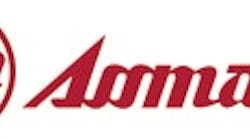Double wall tanks from 20 to 8,850 gal provide protection against hazardous chemical spills without the expense of lined concrete containment. Assmann’s molding process provides a heavy-top sidewall and dome to prevent dome collapse, while a primary inner tank and a secondary locked-on outer tank ensures against chemical spills.
The dome on the inner tank interlocks with the outer tanks’ sidewall, sealing the secondary containment area and preventing debris and snow from entering, making the system suitable for outdoor storage. The double-wall design also prevents cross contamination of contents. Constructed of molded high-density cross-linked polyethylene or FDA-compliant linear polyethylene, the tanks’ outer-shell containment equals 120% of primary tank capacities, exceeding U.S. EPA standards.
Assmann storage tanks and containers are constructed from virgin high-density crosslink or FDA-compliant linear polyethylene, and are used to store and feed corrosive and hazardous materials. All are rotationally molded in seamless, uniformly thick one-piece construction. Facilities in Garrett, Ind., and Marshall, Texas, produce quality corrosion-resistant products, and from these locations, Assmann can ship efficiently with on-time delivery anywhere in North America. These linear polyethylene tanks are certified to NSF/ANSI Standard 61, and NSF certifies the high-density crosslink resin tanks for chemical storage. The company also is ISO 9001:2015 certified.



